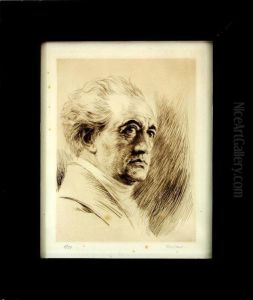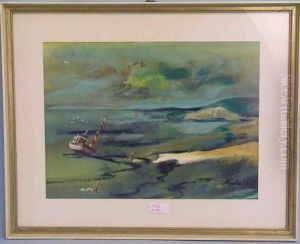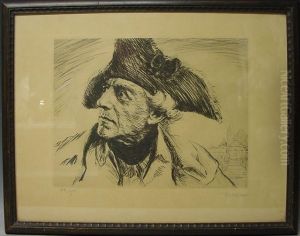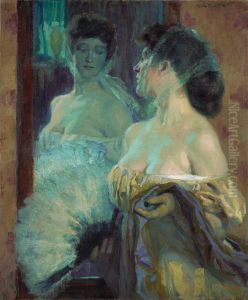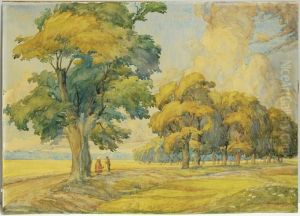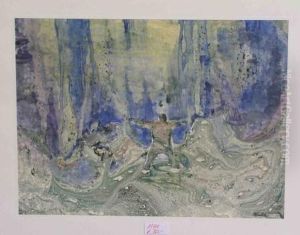Karl Konrad Friedr. Bauer Paintings
Karl Konrad Friedrich Wilhelm Bauer, known as K. K. F. Bauer, was a German artist born on January 4, 1889, in Stuttgart. Bauer's early life was shaped by the rich cultural atmosphere of late 19th-century Germany, and he was particularly influenced by the Jugendstil movement, the German variant of Art Nouveau. He began his artistic education at a young age, showing an affinity for drawing and painting.
In 1905, at the age of 16, Bauer enrolled at the Stuttgart Academy of Fine Arts, where he studied under the tutelage of prominent artists like Adolf Hölzel, who was known for his innovative approach to color and form and would greatly influence Bauer's development as an artist. During his time at the academy, Bauer honed his skills in printmaking, drawing, and painting, and started to develop his distinct style.
After serving in World War I, Bauer's work began to reflect the trauma and disillusionment that was common among European artists of that time. His style became more expressive, and he often depicted themes of human suffering, as well as the spiritual and emotional turmoil of the era. His prints from this period, particularly his etchings, are noted for their intense emotion and technical precision.
Bauer's career progressed throughout the 1920s and 1930s, and he became known for his masterful etchings and lithographs, as well as his contributions to painting and drawing. His work was exhibited in numerous shows, and he gained a reputation for his portraiture and his ability to capture the psychological depth of his subjects.
However, the rise of the Nazi regime in Germany and the Second World War had a significant impact on Bauer's career. His work was deemed 'degenerate' by the Nazis, and he faced increasing difficulty exhibiting and selling his art. Despite these challenges, Bauer continued to produce work, although with less frequency and visibility.
K. K. F. Bauer's legacy is one of technical brilliance and emotional depth. His works are held in various collections and continue to be studied for their contribution to the German expressionist movement and their reflection of the tumultuous early 20th century. Bauer passed away on November 24, 1953, in Stuttgart, leaving behind a body of work that continues to resonate with art lovers and historians alike.
